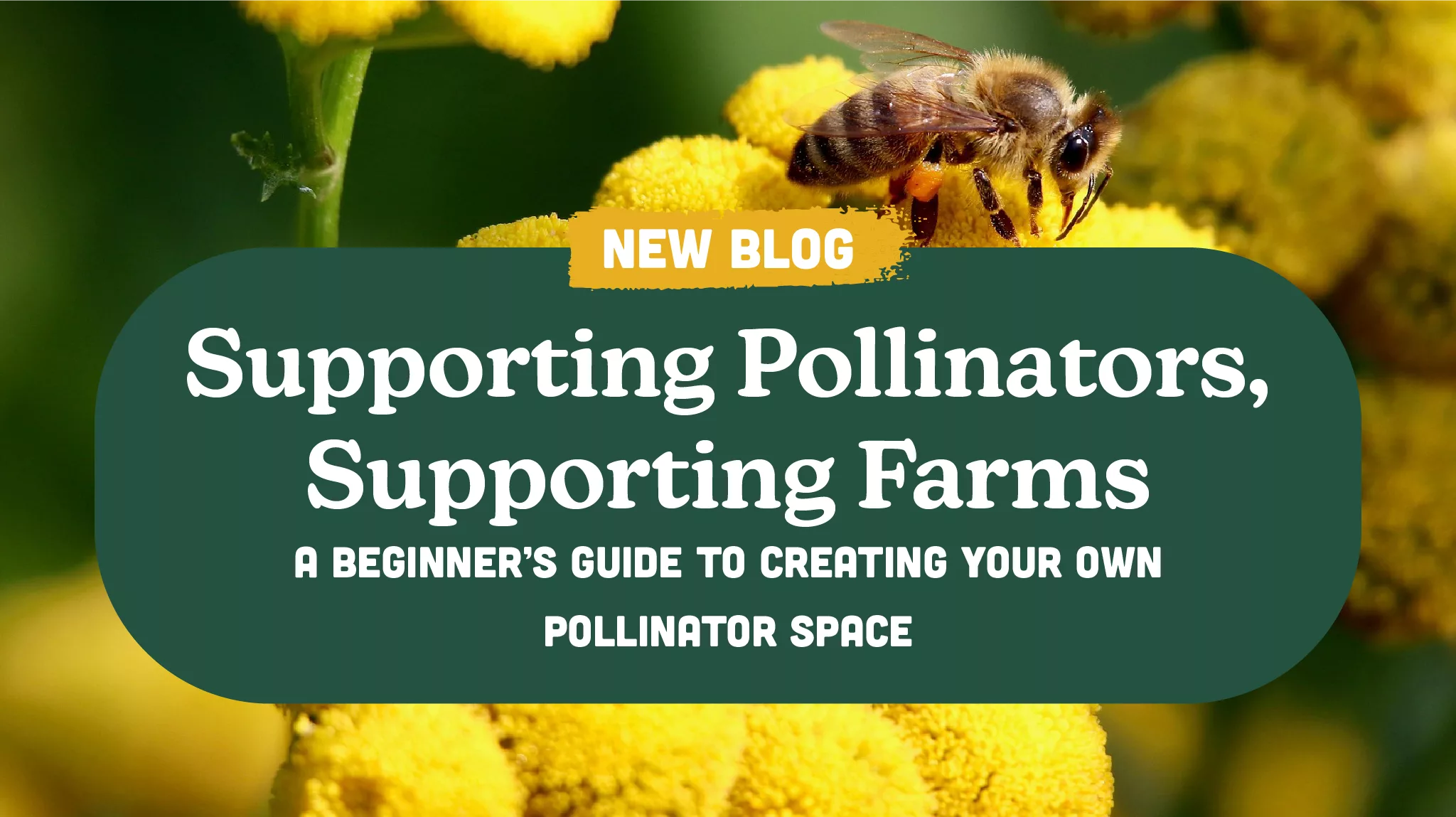Supporting Pollinators, Supporting Farms

Pollinators like bees, butterflies, and hummingbirds play a vital role in agriculture—about 35% of the world’s food crops rely on pollinators to reproduce. Without our pollinators, Lancaster wouldn’t have the delicious food and beautiful plants it’s known for! However, the population of these pollinators is rapidly decreasing due to habitat loss and pesticide usage.
The good news? You can help! In honor of National Pollinator Month, here’s your guide to creating your own pollinator space! Whether you have a sprawling backyard, a small balcony, or even a window box, you can make a space that provides food, shelter, and nesting spots for our pollinator friends.
1. Choose the Right Location
Pollinators need sun and shelter. Aim for a spot that gets at least 6 hours of sunlight and is somewhat protected from strong winds. Even a sunny corner of your yard or a balcony can work perfectly!
2. Select Native Plants
Native plants are best for pollinator spaces because they provide the right nectar and pollen for local pollinators. They are also more likely to thrive in your area without excessive care. These include coneflowers, milkweed, bee balm, salvia, butterfly bushes, and more! Be sure to include a mix of flower shapes, colors, and sizes when planting, and choose plants that bloom at different times of the year to provide pollinators with a continuous food source.
3. Provide Water
Pollinators need clean water, too. A shallow dish filled with water and a few stones for perching will keep our friends hydrated. Change the water regularly to keep it fresh and free from mosquitoes.
4. Add Nesting Materials
Habitat options are necessary for successful pollination. Add resources to your pollinator space to encourage nesting and reproduction, such as bare patches of soil, hollow stems or bee hotels, logs, brush piles, or dead wood.
5. Skip the Pesticides
Chemical pesticides, herbicides, and fungicides can be deadly to pollinators, especially when used incorrectly. Use natural pest control methods (like companion planting) and let beneficial insects do their job.
6. Keep It Wild
Pollinators love diversity and “mess.” Don’t worry about keeping everything super tidy—let some leaves stay on the ground, let a few weeds bloom, and resist over-pruning.
Creating a pollinator space isn’t just a gardening project—it’s a great way to benefit our farms and community! Just like our farms, without pollinators, we wouldn’t enjoy the food and views that make Lancaster County, Lancaster County. To learn more about the role of pollinators in agriculture, click here, or check out the resources below!
References:
https://www.fws.gov/initiative/pollinators/pollinators-benefit-agriculture
https://www.fs.usda.gov/managing-land/wildflowers/pollinators
